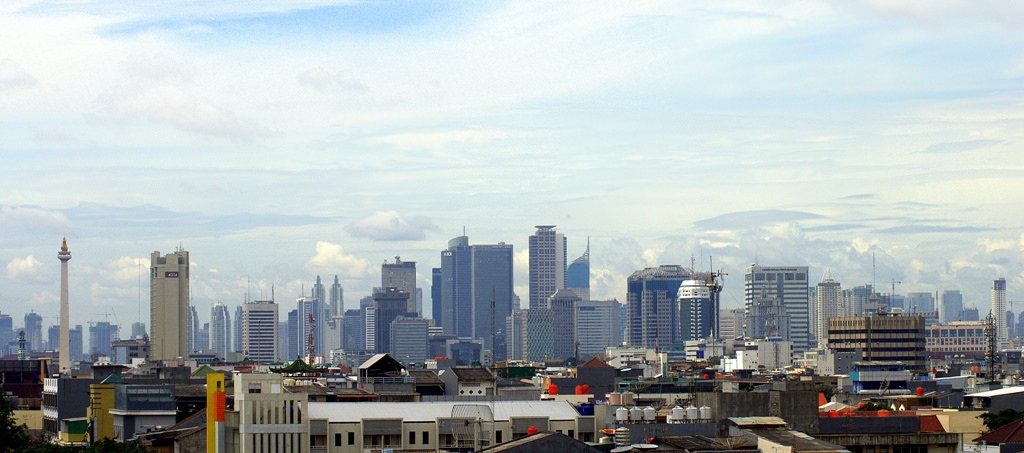
Indonesia’s 2016 was bookended by two significant terrorist events. The first was the 14 January bombing and shooting attack by four people near the Sarinah department store in the centre of Jakarta , which killed eight people and injured 23 others. The second was a series of arrests for terrorism offences, including a planned suicide bombing of the presidential palace by a female jihadist, intended for 11 December but thwarted by CT police the day before.
Those were just two of at least 13 terrorist incidents and plots in 2016, but they were notable for several reasons. Both were inspired by the Islamic State (IS) and directed by senior Indonesian members of IS in Syria. Indeed, the Sarinah attack was the first IS terrorist operation in Southeast Asia to result in the loss of life. Although in many ways a bungled operation, the attack revealed the ability of senior Indonesian jihadists in Syria to organise violence at home, rather than just recruiting Indonesians to go to the Middle East to fight for IS, as had previously been the case.
The failed 11 December plot was the first involving a potential female suicide bomber in Indonesia. Women have long played an important role in Southeast Asia’s terrorist networks, but to date have never directly participated in an operation. That marks an important change in the dynamics of Indonesian terrorism.
Since the emergence of IS in late 2013, there have been predictions that it would further radicalise terrorists in Indonesia, leading to a return to the types of mass-casualty attacks not seen since the Marriott and Ritz-Carlton hotel bombings in Jakarta in August 2009. But for much of 2014 and 2015, IS’s main concern was to attract Southeast Asians to Syria and Iraq as fighters. It made little practical effort to promote operations within Indonesia, Malaysia and the Philippines—the sources of most of its Southeast Asian fighters. The number of returnees from the Middle East increased over 2016, suggesting that they will pose a mounting security threat for Indonesian counter-terrorism officials. In addition to pro-IS groups intensifying their activity, other sections of the jihadist community, particularly Jemaah Islamiyah (JI), are showing signs of consolidation, though they haven’t been involved in recent violent activity.
While Indonesia’s terrorism threat levels have risen because of IS factors, they remain well below those of the 2000s, when JI-linked terrorists, many of them former Mujahidin who had trained in Afghanistan and northern Pakistan in the late 1980s and early 1990s, put together a succession of highly lethal attacks that resulted in more than 300 deaths and a thousand serious injuries.
Virtually all terrorist bomb attacks and plots over the past seven years have been of low technical competence and were often amateurish in their execution. But if better leadership and technical competence became available, especially through returnees from Syria, then threat levels could rise significantly. I also contend that, despite the continued success by CT police in detecting, arresting and prosecuting violent jihadists, the Indonesian Government’s overall CT strategies are patchy and misconceived.
It’s important to keep Indonesia’s terrorism problem in perspective—something that the media isn’t always inclined to do. While Indonesia has the largest jihadist community in Southeast Asia, it suffers fewer terrorism fatalities than the Philippines. Of the several thousand Indonesian jihadists, most aren’t supporters of IS, and they don’t involve themselves in or approve of terrorist attacks against civilians, at least for now. Of the minority who are IS aligned, very few have the skills and discipline to mount major attacks, though many have the wish to do so.
While foreigners and non-Muslim Indonesians are high-priority targets for IS members and affiliates, Indonesian Government officials, especially police and prosecutors, remain at the top of the enemy list and are the most vulnerable to attack.
Indonesia is very likely to experience worsening terrorism problems in the coming years. Despite police success at breaking up terrorist cells and plots, there’s a ready supply of new recruits to extreme jihadist causes like IS. Some recruits are older, more experienced jihadists who’ve come to regard IS’s struggle as more virtuous or compelling than that of other jihadist groups to which they’ve been affiliated. But many of the new recruits are younger and from backgrounds with little trace of militancy or puritanism.
As IS’s military fortunes continue to decline in Syria and Iraq, opening up the prospect of its partial collapse, the possible return of skilled, battle-hardened jihadists to Indonesia could substantially add to the potency of local terrorist groups. If Indonesia’s experience of Mujahidin returning from Afghanistan and Pakistan 25 years ago is any guide, many IS returnees will be committed to violent jihad at home.
The likelihood of a worsening terrorism threat should impel the Jokowi government to bolster its broader counter-terrorist efforts. The National Counter-Terrorism Agency is struggling to properly address many of the key issues relating to radicalisation, and most of Indonesia’s successes in counterterrorism are due to law enforcement, rather than prevention campaigns. Better researched and more tightly targeted deradicalisation programs, along with more professional management of terrorist prisoners and closer monitoring of releasees, would be a substantial advance in Indonesia’s combating of extremism.
 Print This Post
Print This Post